The Pomeranian, also known as the Zwergspitz and commonly called the Pom, descends from spitz-type sled dogs of Iceland. Despite its present diminutive size, the Pomeranian originally was used as a sheep-herding dog and was much larger than it is today, weighing up to 30 pounds. This vivacious and extroverted little dog is one of the most favored of all toy breeds, both in the show ring and at home. They are known for their tiny size and abundant coat. Poms are excellent watch dogs and home protectors. They are especially good with children and the elderly. To its fanciers, the Pomeranian is the ideal companion, suitable for any urban or rural household. The Pomeranian was accepted into the Toy Group of the American Kennel Club in 1888.
Pomeranians have a dense, double coat, which requires regular attention. They typically weigh between 3 and 7 pounds, with the ideal weight for the show ring being 4 to 6 pounds. The average adult Pom is between 7 and 12 inches at the withers. All colors are accepted in this breed.
History The Pomeranian takes his name from Pomerania, a region of Northern Europe on the coast of the Baltic Sea. It’s believed that this was where the dogs were first bred down in size from larger Spitz breeds. The original Pomeranians weighed 20 to 30 pounds — much larger than the Pom that we know and love today.
The breed became popular in Great Britain after Queen Victoria fell in love with a Pom in 1888 while vacationing in Florence, Italy. She brought one home with her, and the breed’s popularity took off. Interest in the breed crossed the Atlantic to the United States, where the first Pomeranian specialty show was held at the Waldorf Astoria Hotel in 1911. Those earlier Pomeranians had foxier faces than the Poms of today and were more likely to be white, black, chocolate, cinnamon, brown, or cream than the red and orange commonly seen now. Poms can still come in any color or pattern, though. The breed is still very popular, ranking 15th among those registered by the American Kennel Club.
Personality The extroverted Pomeranian is smart and vivacious. He loves meeting new people and gets along well with other animals, although he sometimes thinks he's a lot bigger than he is. Don't let him challenge bigger dogs in his mistaken belief that he's their size or larger. Alert and inquisitive, Pomeranians make excellent watchdogs and will bark at anything out of the ordinary. Teach them to stop barking on command, though, or they might go on all day long. Temperament is affected by a number of factors, including heredity, training, and socialization. Puppies with nice temperaments are curious and playful, willing to approach people and be held by them. Choose the middle-of-the-road puppy who's willing to sit nicely on your lap, not the one who's beating up his littermates or the one who's hiding in the corner. Aggression and shyness aren't characteristics that your Pom puppy will outgrow. Always meet at least one of the parents — usually the mother is the one who's available — to ensure that they have nice temperaments that you're comfortable with. Meeting siblings or other relatives of the parents is also helpful for evaluating what a puppy will be like when he grows up. They should be friendly, calm, quiet, and easy to live with. Like every dog, Pomeranians need early socialization — exposure to many different people, sights, sounds, and experiences — when they're young. Socialization helps ensure that your Pom puppy grows up to be a well-rounded dog. Enrolling him in a puppy kindergarten class is a great start. Inviting visitors over regularly, and taking him to busy parks, stores that allow dogs, and on leisurely strolls to meet neighbors will also help him polish his social skills.
Care Pomeranians are very active indoors and are good choices for apartment dwellers and people without a fenced yard. They have a moderate activity level and will enjoy several short daily walks or play times. They are remarkably hearty and enjoy longer walks, but always keep in mind that they are small and sensitive to heat. They love to play and can get bored easily, so be sure to give them lots of toys and rotate them frequently so there's always something new. They especially enjoy toys that challenge them. One activity that both you and your Pom will enjoy is trick training. Poms love to learn new things and enjoy being the center of attention, so teaching them tricks is a perfect way to bond with them while providing them with exercise and mental stimulation. They have a short attention span, so keep training sessions brief and fun. Reward your Pom with praise, treats, or play whenever he correctly performs a command or does something else you like.
Pomeranian Grooming Pomeranians have what is called a double coat. The undercoat is soft and dense; the outer coat is long and straight with a course texture.
Thanks to their small size, Pomeranians are easy to groom, even with all that coat. Brush the coat a few times a week to prevent mats or tangles. Use a medium to harsh slicker brush that will get down to the skin without hurting the dog.
You may have heard that Poms don’t shed. Forget that. They do. Luckily, they are small enough that the amount of hair they lose is negligible. If you brush your Pom regularly, shedding shouldn’t be a big issue.
Bathe a Pom every couple of months or more often as needed. If you use a gentle dog shampoo, you can even bathe a Pom as often as once or twice a week if you want.
The rest is basic care. Trim the toenails every week or two. They should never get long enough to clack on the floor. Brush teeth frequently with a vet-approved pet toothpaste for good dental health and fresh breath.
Potential barking Pomeranians are often too quick to sound the alarm at every new sight and sound. You have to be equally quick to stop them. If you work all day and have close neighbors, Pomeranians are not a good choice for you. For the same reason, Pomeranians should NEVER be left outside in your yard, unsupervised. To make matters worse, some Poms have high-pitched barks that can set your teeth on edge.
Living With Pomeranians are usually easy to keep, although some are finicky eaters. They do not have a tendency toward obesity, probably because of their active nature. The double coat does require some regular grooming attention once or twice weekly, with daily sessions during shedding season. Despite being small, Pomeranians do need regular exercise and thrive on training. They are very intelligent and enjoy learning tricks and performing. Poms generally get along well with other pets, but caution should be used mixing any toy breed with large breeds that might injure a toy dog accidentally. If raised with children they do quite well; if not, they may be reserved. Children need to be reminded that these smaller dogs may not be as sturdy as larger dogs, and interactions should be supervised. Poms are excellent watchdogs with their alert attitude and their tendency to bark. They make very good companions for elderly folks because of their alertness and their small size.
Here some cute pictures of Pomeranian:
Please Share If You Like...

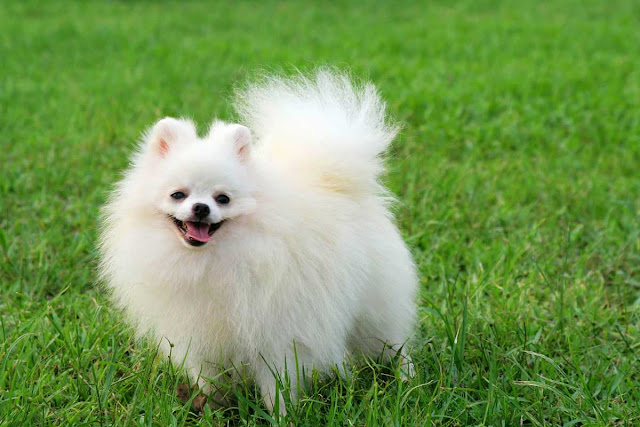
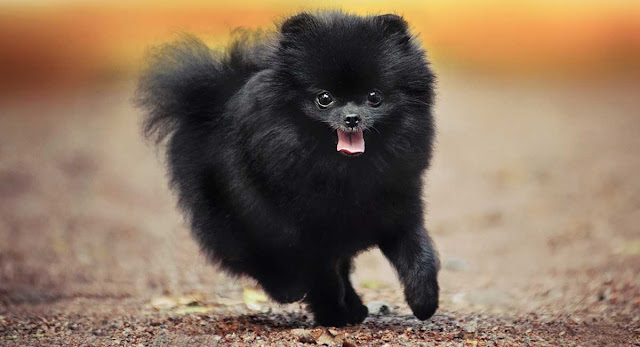
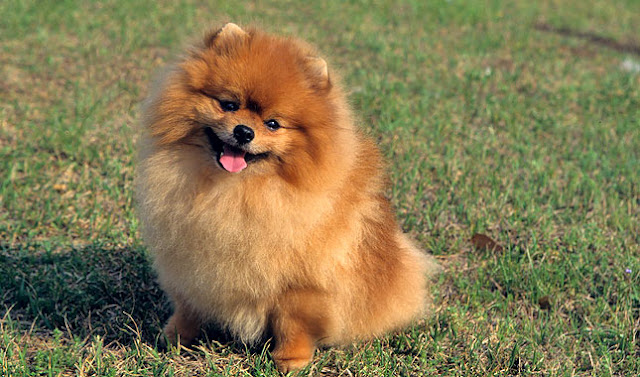
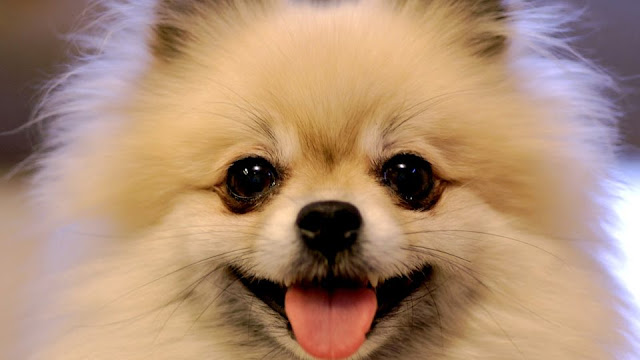
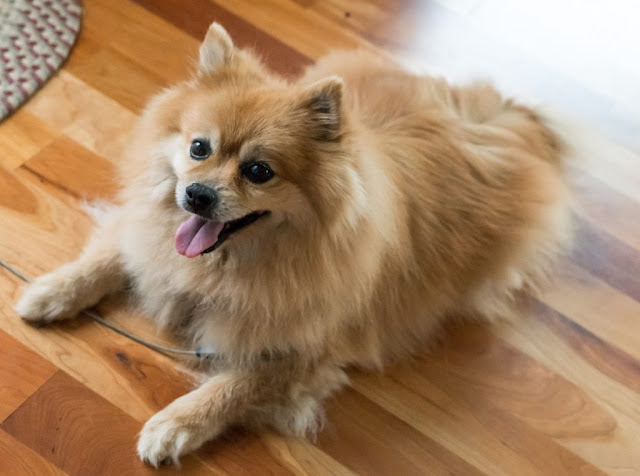














No comments:
Post a Comment